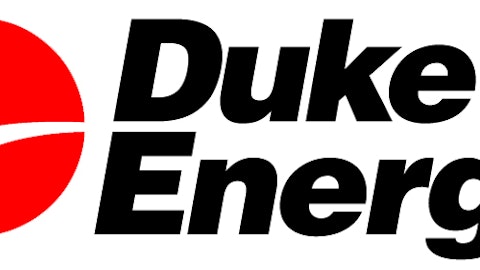Wind and solar power are great, but they don’t generate electricity all the time. That’s why natural gas, coal, and nuclear power are still the basis of most electric systems. However, there are ways to store power that could change that equation.

One of the biggest issues facing wind and solar is that electricity is hard and expensive to store. There are numerous storage schemes, including compressing air in large caverns and pumping water uphill to use later to generate electricity. However, one game-changing idea that’s gaining steam is batteries.
Not a D-Cell
Batteries are expensive and relatively inefficient. However, they are an easy way to store power for later use. Independent power producer The AES Corporation (NYSE:AES) has a business unit dedicated to energy storage. AES Energy Storage has “150 MW of battery based energy storage resources in operation and 1000 MW in development.” It has two large projects up and running in the United States in West Virginia and New York, and two in Chile.
The AES Corporation (NYSE:AES) doesn’t break out the revenues of its Energy Storage business, but it’s undoubtedly small today. That said, it puts The AES Corporation (NYSE:AES) at the leading edge of key developments in the solar and wind markets. That makes this global energy player even more interesting.
It has operations in almost 30 countries, with a notable presence in Latin America. The company faced a near-death experience after Enron collapsed, but has emerged from that episode a stronger and more agile competitor. For example, The AES Corporation (NYSE:AES) has been working on streamlining its business around core assets. It could jettison as much as $2 billion worth of assets in the coming years. The cash from these moves would likely be used to solidify its position in core markets, buy back stock, or support its recently initiated dividend.
Volatile fuel and electricity prices have been a drag on the company, leading to a steep loss last year. However, The AES Corporation (NYSE:AES) has notable assets in an out-of-favor industry. Now could be a good time for more aggressive investors to take a look. With an around 1.3% yield, though, income investors won’t find it very interesting.
The Duke
Duke Energy Corp (NYSE:DUK) is another utility that’s starting to make use of battery power. In January, it started using a 36-megawatt system at its 153-megawatt Notrees Windpower Project in Texas. Duke Energy Corp (NYSE:DUK) Renewables President Greg Wolf explained at the time that, “Developing an expertise in this advanced technology will enable us to expand the use of renewable energy, better integrate it into the power grid and become even more efficient at serving our customers.”
Assuming the $44 million project, half of which was paid for by the U.S. Department of Energy, works as expected, Duke Energy Corp (NYSE:DUK) could roll the technology out to other projects. Like The AES Corporation (NYSE:AES), Duke Energy Corp (NYSE:DUK), then, is at the forefront of an important change. To that end, the company is also one of two utilities with a coal gasification facility, so battery storage isn’t the only technology it’s working on.
Duke Energy Corp (NYSE:DUK) serves over seven million customers in six states in the Southeast and Midwest. The company is largely a regulated business after buying Progress Energy for nearly $14 billion. That deal, however, led to the retirement of Duke Energy Corp (NYSE:DUK)’s CEO. Still, the shares yield around 4.4%, the dividend has been increased annually since 2007, and revenues and earnings look set for slow and steady growth. More conservative investors might prefer Duke over AES.
For Over a Decade
American Electric Power Company Inc (NYSE:AEP) has over 5 million customers in 11 states, though almost 30% of its customer base is located in Ohio. The company generates most of its earnings from regulated markets, but Ohio is working toward deregulation. That’s a material risk.
Although getting top billing in The New York Times for its battery efforts is nice, the real issue right now is how well it can manage the deregulation process in a key market. Investors willing to take on the risk of this transition could find the stock’s recent price alluring and 4.2% yield alluring, but don’t buy it just because the Times highlighted it in a battery article.
Changing Power
If utilities can cost effectively store power from less reliable energy sources like wind and solar, it could materially change the power industry. AES and Duke are both worthwhile investments experimenting with the technology today. American Electric Power Company Inc (NYSE:AEP) is facing a different set of risks, but if you believe in management’s ability to navigate deregulation, it might be worth looking at.
Reuben Brewer has no position in any stocks mentioned. The Motley Fool has no position in any of the stocks mentioned. Reuben is a member of The Motley Fool Blog Network — entries represent the personal opinion of the blogger and are not formally edited.
The article Is the Problem With Renewable Energy Solved? originally appeared on Fool.com is written by Reuben Brewer.
Copyright © 1995 – 2013 The Motley Fool, LLC. All rights reserved. The Motley Fool has a disclosure policy.



